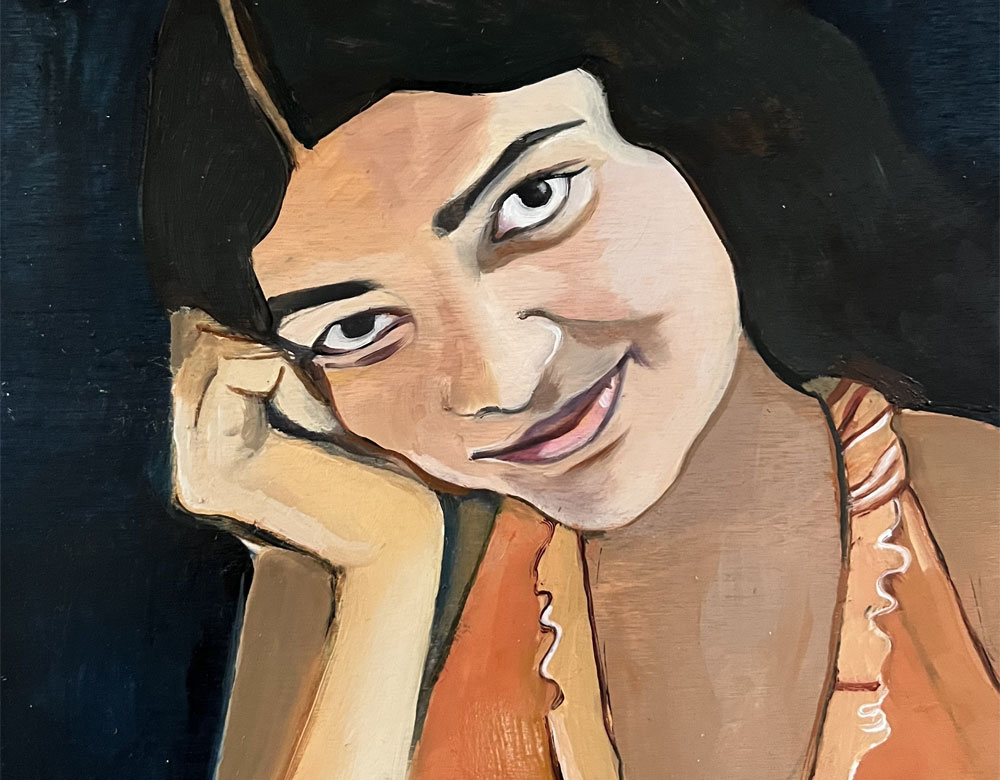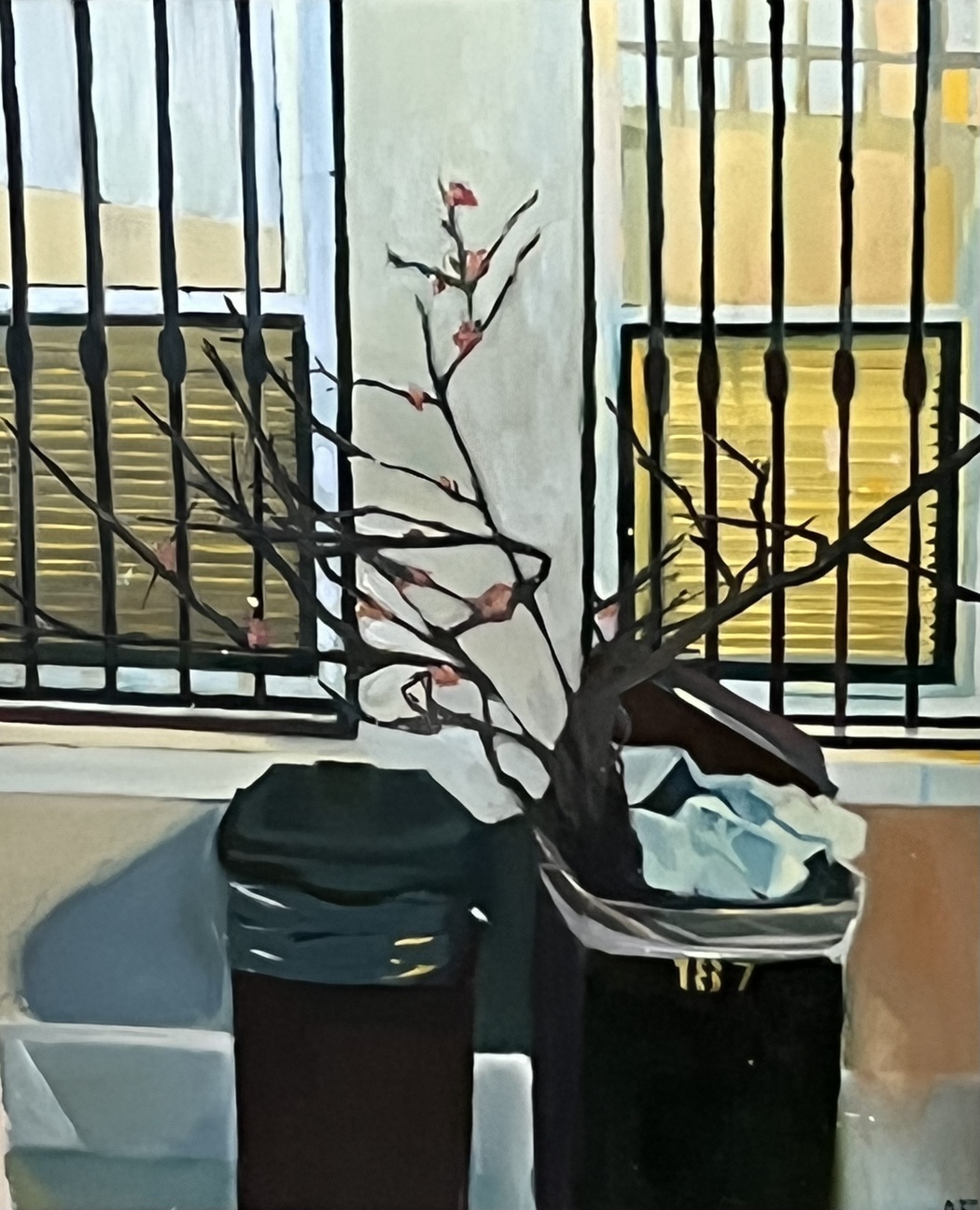Alice Finnerty
Year of birth: 02/12/1992
Where do you live: New York
Your education: Wesleyan University (BA); Columbia University (Post-baccalaureate psychology studies)
Describe your art in three words: Direct, Emotion-driven, Evolving
Instagram

Can you tell us about your journey into painting and what drew you to oil painting in particular?
I started painting seriously in classes for young adults at the Art Students League. It was my first time working with oil paint and working from a model, and I immediately took to it. I was drawn to the way the paint blended on the canvas, the richness of the colors, and the slower, more flexible drying time compared to other mediums I had used. The process felt natural and engaging, and it quickly became something I wanted to continue exploring. Working with a slower drying medium allowed for more time to rework the composition and layer the colors with more precision and accuracy.
Your work often blends representation with abstraction. How do you approach finding that balance in your paintings?
In striving for a balance between representation and abstraction, I focus on how form, color, and composition interact in my work. I usually start with something loose yet tangible like a gestural suggestion of a figure, landscape, or an object and then I allow the painting process to guide me towards representing the form more accurately. Usually this means layering the paint to build up shapes and tonality changes. I try to use loose brushstrokes to capture the essence of my subject and the qualities that make them unique as opposed to striving for hyperrealism, yet as I layer the paint over time the subject itself becomes more representationally captured in the painting.
You mention studying at Wesleyan University and attending residencies. How have those experiences influenced your current practice?
Studying at Wesleyan University, particularly taking drawing classes there, helped me develop a strong foundation in observation and composition. Those classes encouraged me to think critically about form and space while also pushing me to experiment with different materials and approaches. That balance between structure and exploration has carried over into my painting practice, especially as I navigate the space between representation and abstraction.
This summer, I’ll be attending two residencies at SVA in fine art contemporary practices and I’m excited to see how the experience will further shape my work. These residencies will provide the time, space and structure to immerse myself in painting without distractions. It will also be a great opportunity to gain insight into my work through critiques and engaging with other residency participants. The feedback and critiques from professors and other artists will be the most valuable part of the program, from my perspective. I hope that my work gets pushed and that I get to explore more about painting.
 Alice Finnerty | Brooklyn branch
Alice Finnerty | Brooklyn branch
Light and texture seem central to your work. Could you tell us more about how you use layered glazing and impasto techniques to create depth in your paintings?
Light and texture play a crucial role in my paintings, and I use both layered glazing and impasto techniques to create depth and atmosphere. Glazing allows me to build up transparent layers of color, creating subtle shifts in tone and luminosity that give the painting a sense of depth. This technique helps me capture light as the layers interact and create a glow that wouldn’t be possible with a single application of paint.
In contrast, I use impasto to introduce texture and physicality to the surface. Thick brushstrokes or palette knife applications create areas of depth, drawing attention to certain parts of the painting and emphasizing certain unique attributes of my subjects.
You reference the works of Gerhard Richter and Alice Neel in your practice. How have their approaches to art influenced your own?
Each of these artists has influenced my approach to painting, but in very different ways. Richter’s ability to move fluidly between representation and abstraction resonates with me—his blurred, layered surfaces and the way he allows chance to play a role in his process have encouraged me to venture into abstraction in my work.
Alice Neel, on the other hand, has impacted the way I approach the figure. Her portraits feel immediate and expressive, capturing not necessarily a precise likeness but a deeper psychological presence, social context, and the character of her subject. I admire her loose, confident brushwork and the way she allows color and line to remain raw and visible.
By looking at both artists, I’ve found ways to balance representational work with spontaneity in my practice.
Your work seems to be deeply rooted in research, with regular visits to museums like the Metropolitan Museum of Art and the Frick. How does studying Renaissance and Baroque techniques inform your process today?
Studying Renaissance and Baroque techniques has had a significant influence on my approach to painting, particularly in how I think about composition, light, and surface treatment. Attending lectures about how masters achieved particular effects and visiting museums allows me to closely observe the ways these painters used layering, glazing, and chiaroscuro to create depth and drama. Seeing these works in person, rather than in reproductions, helps me understand the material qualities of the paint. Studying these paintings also influences my approach to composition and the layout of figures on the canvas.
 Alice Finnerty | Portrait of Satya
Alice Finnerty | Portrait of Satya
How do you incorporate your studies of human emotion and perception into your portraiture and landscapes?Is there a particular emotional quality you aim to convey?
In both my portraiture and landscapes, I’m interested in capturing a sense of emotional presence—something that goes beyond representation and invites the viewer to engage on a more introspective level. My studies of human emotion and perception help me think about how subtle shifts in color, form, and composition can evoke certain moods or psychological states.
In my portraits, I focus on gesture, expression, and the way paint itself can convey feeling. I often allow brushstrokes to remain visible, suggesting movement or the passage of time. This sense of imperfection and fluidity mirrors the complexity of human emotion.

Leave a Reply